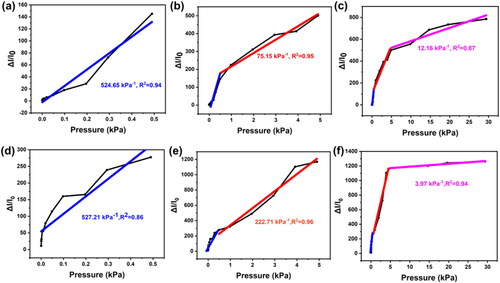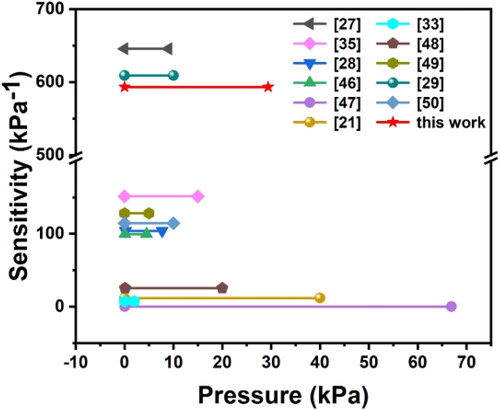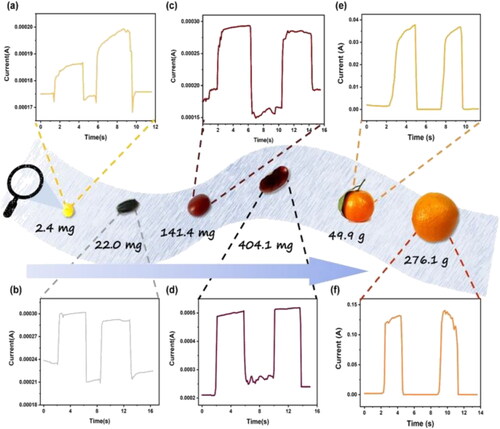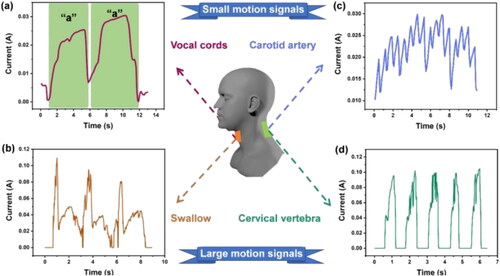Figures & data
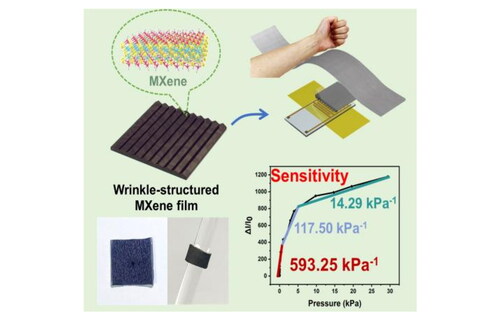
Figure 1. Schematic diagram showing the preparation of wrinkle-structured MXene film-based pressure sensor. (a-c) The preparation process of MXene dispersion. (d-f) The preparation process of wrinkle-structured MXene film. (g) Schematic diagram of flexible ultrasensitive pressure sensors based on the wrinkle-structured MXene film. (h) Photograph of the MXene film with a wrinkle microstructure. (i) The bending of the wrinkle-structured MXene film from glass rod (surrounds 360o). (j) Photograph of flexible ultrasensitive pressure sensors.
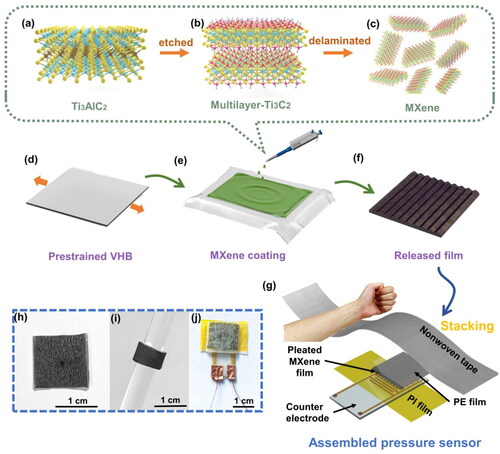
Figure 2. The characterizations of MXene dispersion and flexible MXene films. (a) Digital photograph of MXene dispersions. (b) TEM and (c) AFM images of MXene nanosheet. (d) Digital photo and cross-sectional SEM image of MXene filtration film. (e) SEM image of MXene film with wrinkle microstructure. (f,g) SEM image of the amplified top area of wrinkle microstructure.
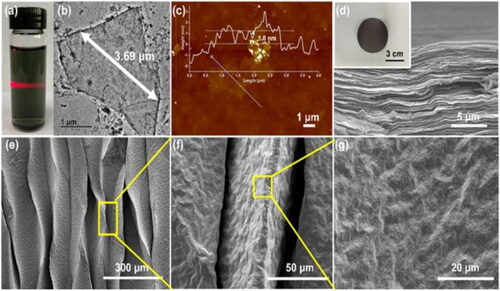
Figure 3. Evaluation of the electromechanical performances of the wrinkle-structured MXene film-based pressure sensor. (a) I–V curves of the pressure sensor under different applied pressures. (b-c) Plot of I–T curve at different pressures applied on the pressure sensor: (b) low pressure (0.49‒196 Pa), (c) high pressure (294 Pa‒9.8 kPa). (d) Detection performance under ultralow pressure of 4.9 Pa. The corresponding (e) response time and (f) recovery time of the pressure sensor. (g-h) Test of the repeatability performance of 11600 cycles under a pressure of 343 Pa.

Figure 4. Ultrasensitive device performance and working mechanism of the wrinkle-structured MXene film pressure sensor. Performance of the sensitivity in the pressure range of (a) 0.49 Pa‒0.49 kPa, (b) 0.49 kPa‒4.9 kPa and (c) 4.9 kPa‒29.4 kPa. Cross-sectional SEM images of the wrinkle-structured MXene film: (d) the continuous serrated structure, (e) the appearance of air gaps from the tip structure. (f) Model of MXene nanosheets used to derive the mechanism of the sensor under low pressure. (g) A single wrinkle model used to derive the mechanism of the sensor under high pressure.

Figure 6. The SEM image of the wrinkle-structured MXene film with different pre-stretching ratio. (a-b) 50%, (c-d) 100%, (e-f) 200%.
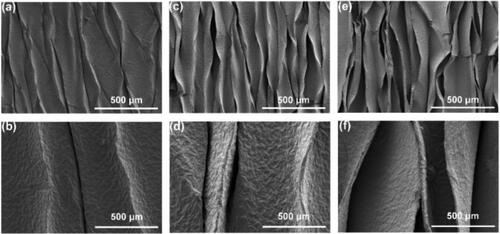
Figure 7. Performance of sensitivity in different pressure range of the wrinkle-structured MXene film with different pre-stretching ratio. (a-c) The wrinkle-structured film with 50% pre-stretching ratio: (a) the pressure range of 0.49 Pa‒0.49 kPa, (b) the pressure range of 0.49‒4.9 kPa, (c) the pressure range of 4.9‒29.4 kPa. (d-f) The wrinkle-structured film with 200% pre-stretching ratio:(d) the pressure range of 0.49 Pa‒0.49 kPa, (e) the pressure range of 0.49‒4.9 kPa, (f) the pressure range of 4.9‒29.4 kPa.
